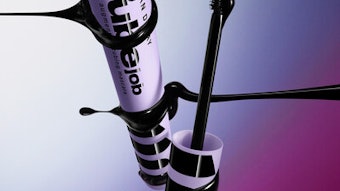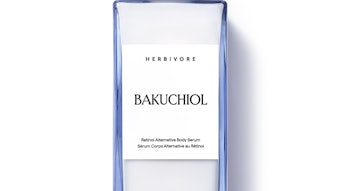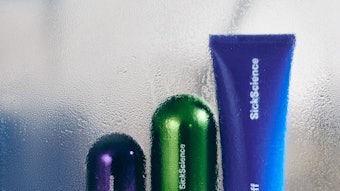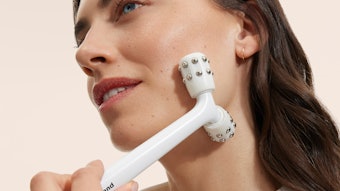- Almost 64% of all social media conversations regarding facial care were about moisturizers.
- In conversations about facial product on social media, retinal and antiaging creams are talked about with a lack prominent emotions.
- While men talk about creams, defining a cream as a “men’s” cream is a less popular notion to them. Guys, too, like to see their creams labeled for face, eye and night.
As one Facebook user aptly pointed out “My face is my temple,” and a blogger recently offered that “There’s no point in a pretty body if you don’t spend time taking care of your face, too.” These comments, just a few examples from explorations of the social media universe, demonstrate how face care is a rather sensitive but insanely popular realm of conversation. Of more than 50,000 online conversations about skin care that were generated in summer 2013, about 40% were about face care.
The social media space is a vibrant source of current, candid and unprompted consumer insight. While other research methods focus on asking questions of consumers, they are estranged from modern consumers’ app savvy mobile world. Empowered with the ability to tweet, review a product, post a picture, blog a review and so much more, anything is public and is accessible to anyone. One of the key attributes of social media in terms of consumers’ shopping experience is that it allows a direct, candid comparison of products, brands and stores. Because consumers speak freely about their preferences through social media, it provides a more level playing field than can be acquired through traditional, question-based research. Any brand, whether a dominant player or an upstart boutique, can gain unfettered access to consumers’ unedited thoughts.
Unlike findings from previous work in beauty, makeup, general skin care and body care, there are two key takeaways with face care: first, a moisturizer is the ultimate need of every consumer; second, there is an overwhelming lack of emotion in the category. This lack of passion seems to indicates lack of awareness regarding the category or confusion in the marketplace. This is not necessarily a negative, and may be an opportunity for brands to enlighten and excite in a category that is, quite literally, in your face.
The Moisturizer Story
When walking into a store, consumers have to decide whether they’ll the face cream or night cream, the retinal cream or corrective cream, or whether to buy a serum instead of a cream—and with all of them promising to be the elixir of youth. It might alarm retailers and beauty brand marketers to learn that most conversations on social media are dominated by talk of moisturizers. Almost 64% of all conversations were about moisturizers, compared to less than 12% for all other creams in total (including face, eye, wrinkle and anti-aging creams). While brands may think “moisturizer” is an overused word and not differentiating enough, they cannot overlook the fact that this remains the fundamental necessary function of any face care product, no matter how it is repackaged.
When looking to brands that provide the best moisturization, Clinique outnumbered all other brands with 20% of the conversational volume, while all other brands captured less than 10% of social media chatter. This is due to the brand value of Clinique’s face moisturizers, which is why consumers vocalize thoughts like: “[Clinique] is a miracle product!” or “I owe it to Clinique and their Dramatically Different lotion ... :) Thanks Clinique!” It is no surprise that of the top 10 brands, Clinique also garners the most positive conversations.
Garnier, Olay, Maybelline and L’Oréal Paris follow, with a lower volume of conversation. Nonetheless, almost half of them are positive, a trend that continues even to the lesser talked about brands, too. Dove however stands out as having the most neutral conversations, with only 4% positive, owing perhaps to its campaigns that focus on real beauty, which are so starkly distinct from mainstream face care advertising that they evoke polarizing emotions. And when emotions are at a tug of war, the result is an overall neutral impression.
A Plethora of Creams
We cannot talk about the face without talking about creams that cater to every facial aspect and time of day. While general face creams lead the conversation, it is no surprise that eye creams come next, followed by a series of youth-generating ones: night, wrinkle and aging.
The most talked about cream, however, does not evoke much of any emotion, except for development areas in feelings of trust and energy. Retinal and anti-aging creams are similarly talked about with a lack prominent emotions. Consumers only speak passionately about wrinkle and night creams, with the most appreciation and enthusiasm for the former and excitement and happiness with the latter. This exposes a huge opportunity area for beauty companies to conduct advertising and social media strategies that encourage their loyal consumers to talk more passionately about the creams they use.
Men’s creams are an interesting category. While men talk of all of the aforementioned creams as their own, defining a cream as a “men’s” cream is a less popular notion. Guys like to see their creams labeled for face, eye and night, as well.
Beyond Moisturizers and What Face Products Mean for People
Beyond moisturizers and creams, store shelves are packed with a plethora of products, and nearly overwhelming consumers. The candid nature of social media enables beauty companies to understand which ones of these are worthy of further investment, based primarily on how much people talk about them, often indicative of use, and what emotions they attach to them.
Exfoliants and sunscreens evoke much appreciation. Touting everything from walnut shells to cleansing beads, exfoliants, in particular, evoke much excitement and energy by making consumers feel “fresh and [their] skin awake,” as one blogger points out. However, there are opportunities for these highly function-driven products to become more fashionable. This may be easy for the creams of the world, but not so much for exfoliants, sunscreens, cleansers and toners. Ever popular face masks evoke humor and excitement, owing to folks making fun of them instead of focusing on functionality (an image that could do with an overhaul).
Anti-aging products evoke both appreciation and trust. It is a heavily sought after category, but despite these two emotional strengths, beauty companies have the opportunity to distinguish and refine the category further by making it fashionable, exciting and classy—all of which are less charted territories. And lastly, cleansers and toners offer an opportunity for more emotion, perhaps by educating consumers on how to use them or by talking more about them.
Talking About Face Care Problems
No product goes to market without a problem-solving or enhancement-related angle. And similarly, an exploration of which problems consumers talk about most reveals that complexion issues are most popular. Discussions about acne, wrinkles and scars are followed by conversations about blackheads and whiteheads. What’s more interesting than the topics themselves is that there is a direct correlation of conversational volume to positivity: the more people talk about something, the more positively they talk.
This is quite distinct from previous social media research, since, in general, consumers tend to “vent” more on social media, and a large conversational volume is never indicative of positivity. However, this reinforces the notion that consumers may talk more about an issue if they are familiar with it, or are relieved to find solutions for it. And within areas where they are unaware or confused about a subject, they simply won’t speak openly online.
Everyone Loves Sephora
Not surprisingly, conversations about face care centered mostly around Sephora, which garnered almost a quarter (23%) of all store related conversations. Of these, 41% were positive and only 3% were negative, reinforcing the retailer’s competitive position. Pharmacies, resellers and department stores followed with 18%, 15% and 14% conversational volume, respectively, each with slightly more negative perceptions. This fortifies the need for face care brand owners to focus on channels that are more talked about and to create meaningful retail partnerships. Perhaps leveraging the buzz about certain retailers would evoke more passionate conversations about a category that is rather sensitive, but nonetheless important.
In conclusion, social media is an important supplement to traditional research for truly understanding the simpler insights that other research methodologies sometimes overlook.
Sourabh Sharma comes to SKIM with a keen eye for understanding consumer behavior. He adds perspective to marketing research from his years in brand management and product development at L’Oréal, where he launched hair color and makeup products for brands in Asia and North America. With a multifaceted background, Sharma enables the firms he works with to acquire a stronger understanding of their end users. Furthermore, he strives to extract value from the evolving brand-to-consumer interface through his social media research.










